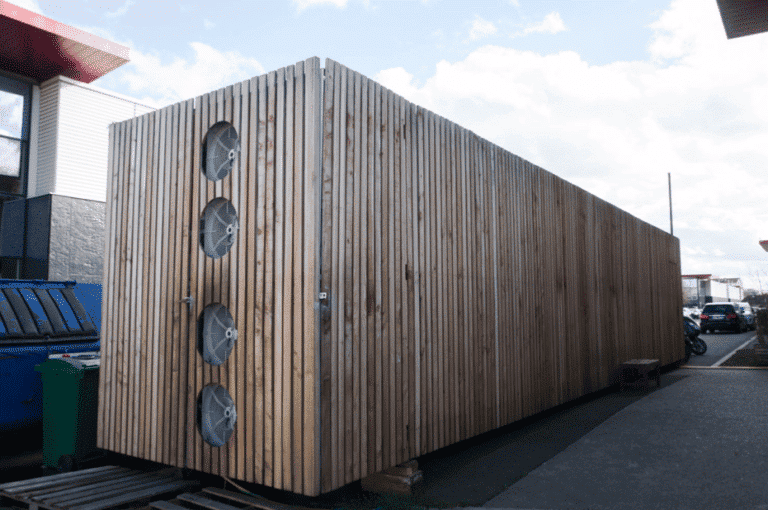
This Urban Farm Grows Strawberries in Shipping Containers in Central Paris

Mónica R. Goya
By Mónica R. Goya
Agricool is a Parisian urban agriculture tech start-up that recently raised $28 million to scale its business: growing strawberries in reclaimed shipping containers in central Paris using vertical farming methods. Since the plants are cultivated using aeroponics — that is, by spraying a mist of water and nutrients on the plants’ exposed roots (as opposed to the plants growing in soil) — their process uses 90 percent less water than conventional agriculture. Pesticides aren’t needed because they grow in a controlled environment, and their carbon footprint is almost nonexistent because the transportation radius is less than 20 kilometers. Additionally, they claim to be 120 times more productive than traditional, soil-based agriculture, and their LED lights are powered by renewable energy.

In terms of humidity, air quality and light, Agricool has created the perfect environment by growing strawberries in customized, reclaimed shipping containers. Every year, seven tons of strawberries are produced in each container. According to Agricool, these containers can yield 120 times as much as a field.
Mónica R. Goya
Founded in 2015 by Gonzague Gru and Guillaume Fourdinier — two friends who grew up on farms in the French countryside — Agricool’s principles are based on sustainability without compromising profitability. Furthermore, their business model can be imitated anywhere. Proof of their scalability is that they operate a strawberry container in Dubai. With their latest round of investments, they are planning to add about 100 containers to their current fleet by 2021.

The final design of each shipping container looks modern, with its external shell covered by a wooden panel. One of the reasons why the company uses reclaimed containers is because they are weatherproof.
Mónica R. Goya

Vertical farming makes the most of available space. Also, the company designs and produces its own LED lights, which are tailored specifically to its needs.
Mónica R. Goya

When the right time comes, colonies of bumblebees are brought into the shipping containers for pollination.
Mónica R. Goya
Their strawberries can be purchased at Monoprix supermarkets, as well as La Grande Epicerie de Paris, one of the city’s most exclusive food halls.

Lab tests are conducted to assess the sugar levels and nutrients of the fruit. According to Agricool’s own lab tests and external tests, their strawberries contain 30 percent more vitamins and 20 percent more sugar than conventional ones.
Mónica R. Goya

Remy Faury is an engineer who works on the research and development team at Agricool. The company’s R&D team makes up 70 percent of the company.
Mónica R. Goya

Maria Foncillas is a “cooltivatrice” or an urban farmer, at Agricool.
Mónica R. Goya

At Agricool, several varieties of strawberries are grown throughout the year. These ones, in particular, belong to the Magnum variety. The growing cycle of the fruit is two months from seed to harvest.
Mónica R. Goya
Reposted with permission from our media associate Modern Farmer.
- Why This Montana Farmer Grows Food Year-Round in Shipping ...
- How Urban Agriculture Can Improve Food Security in U.S. Cities ...

 233k
233k  41k
41k  Subscribe
Subscribe 